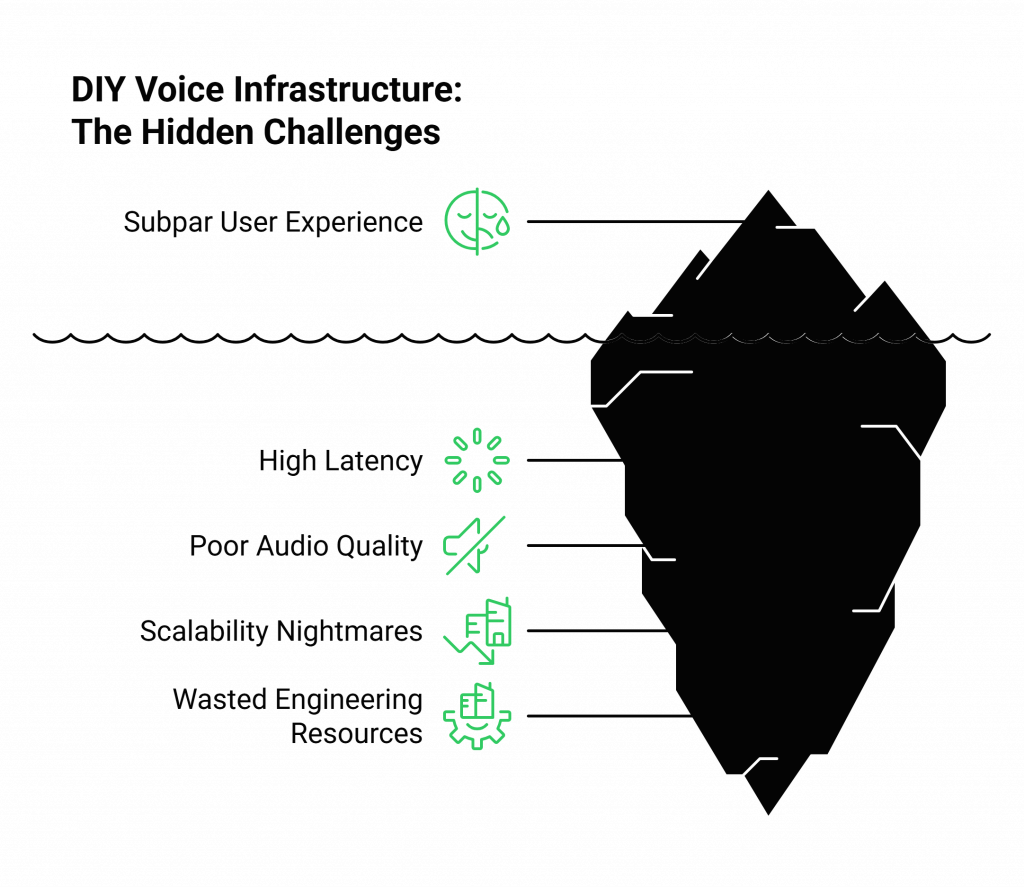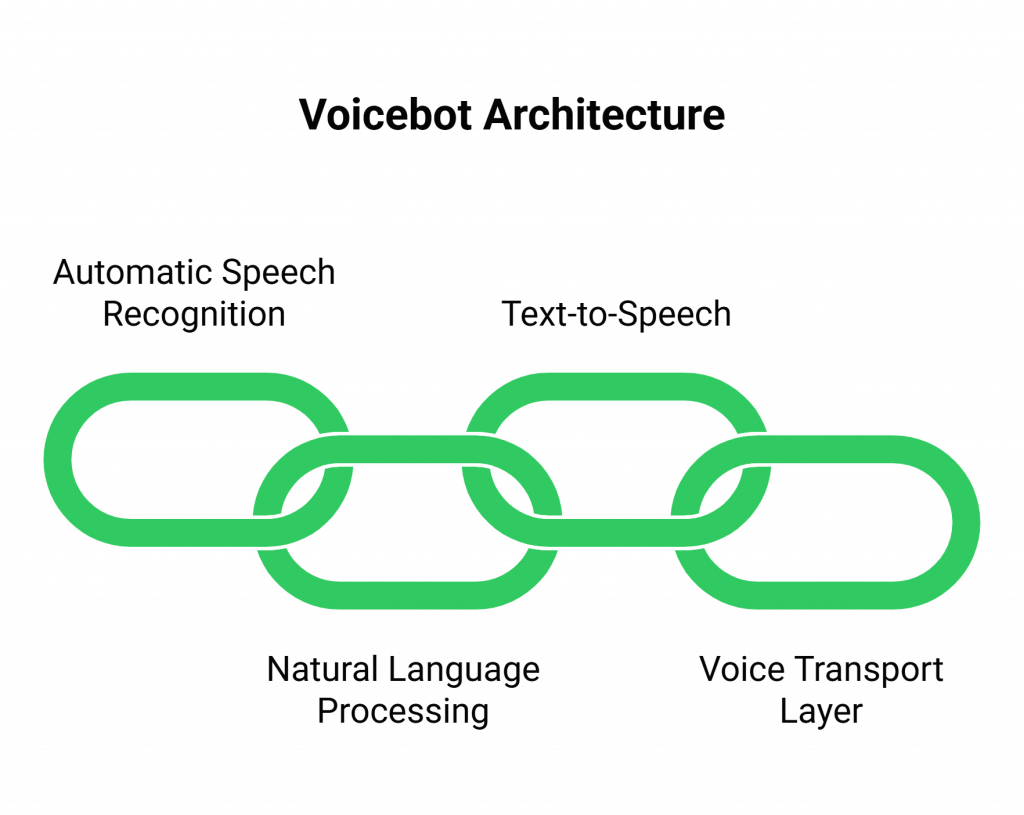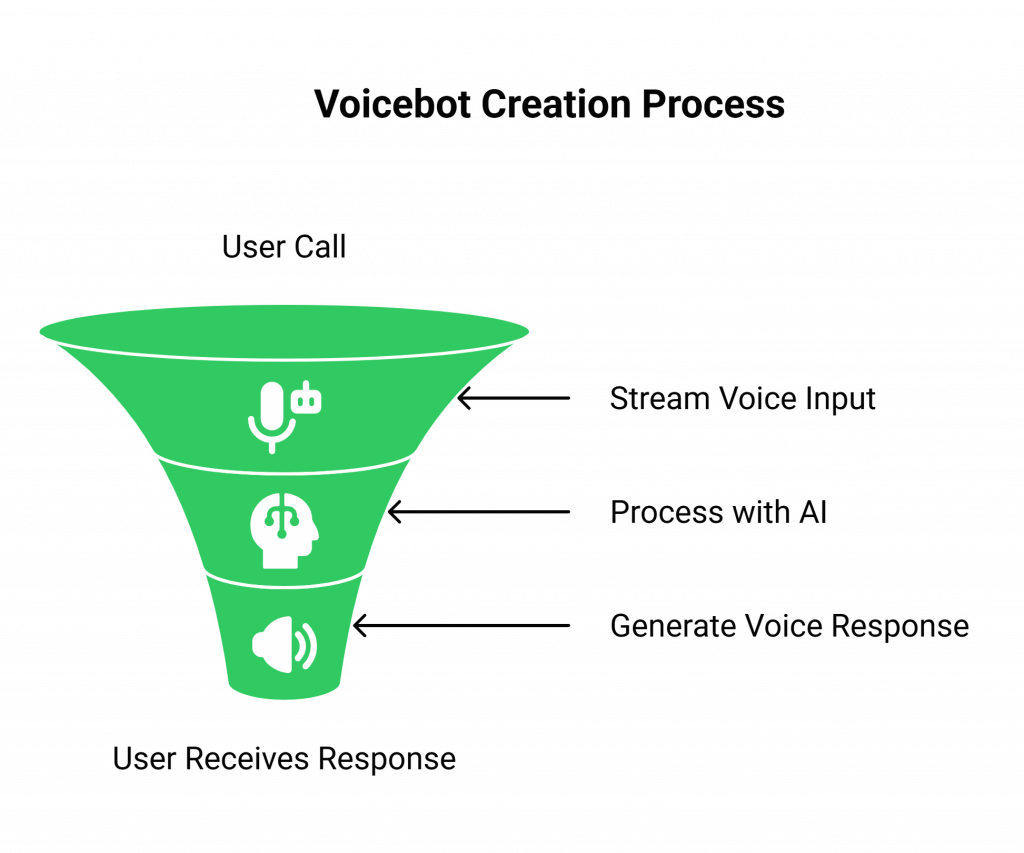Creating a smart Voicebot online sounds exciting, but making it talk smoothly on a phone call is not so easy. While AI engines like OpenAI or Google can understand and reply, the voice part but connecting calls, handling audio, and reducing delay is the real challenge. That’s where FreJun AI helps.
FreJun gives you the voice infrastructure so your AI can talk clearly and quickly. This article explains how FreJun makes building a Voicebot simple, fast, and reliable.
Table of contents
- What is a Voicebot, and Why is the Voice Part So Hard?
- The Hidden Challenge: Why DIY Voice Infrastructure Fails
- Introducing FreJun AI: The Voice Transport Layer for Your AI
- The Anatomy of a Modern Voicebot Stack
- How FreJun AI Powers Your Custom Voicebot Online: A 3-Step Overview?
- FreJun AI vs. Building Your Own Voice Infrastructure: A Comparison
- Best Practices for Developing an Enterprise-Grade Voicebot
- Final Thoughts: Focus on Your AI, Not on Voice Infrastructure
- Frequently Asked Questions (FAQ)
What is a Voicebot, and Why is the Voice Part So Hard?
The excitement around advanced AI is palpable. With powerful Large Language Models (LLMs) from OpenAI, Google, and others, businesses are eager to build intelligent agents that can automate tasks and communicate naturally. The ultimate goal for many is to create a Voicebot online an AI-powered agent that interacts with users through spoken language to handle customer support, schedule appointments, or even qualify sales leads.
These AI systems are transforming how businesses engage with customers by providing instant, context-aware, and human-like interactions. However, many development teams quickly discover a critical roadblock. Having a brilliant text-based AI is one thing; enabling it to have a fluid, real-time conversation over a phone line is an entirely different and far more complex challenge.
The problem isn’t the AI itself; it’s the plumbing. The intricate, high-stakes world of voice infrastructure managing real-time audio streams, minimizing latency, and ensuring crystal-clear qualityis a specialized engineering discipline. Teams that attempt to build this layer from scratch often find themselves bogged down by telephony protocols and network issues, distracting them from their primary goal: creating a powerful AI experience.
The Hidden Challenge: Why DIY Voice Infrastructure Fails
When you decide to build a Voicebot online, you’re not just building an application; you’re building a real-time communication service. This introduces a host of challenges that have nothing to do with your AI model’s intelligence but everything to do with its ability to communicate effectively.

Attempting to build this voice layer in-house typically leads to:
- High Latency: The awkward pauses between a user speaking and the AI responding can destroy conversational flow. Engineering a system to minimize this lag across multiple networks and services is incredibly difficult.
- Poor Audio Quality: Jitter, packet loss, and poor audio processing result in garbled, robotic, or unclear sound, frustrating users and undermining the credibility of your AI.
- Scalability Nightmares: A system that works for a single test call may crumble under the pressure of hundreds of concurrent calls. Building geographically distributed infrastructure for high availability and reliability is a massive undertaking.
- Wasted Engineering Resources: Your most valuable engineers should be refining your AI’s logic and conversational design, not debugging SIP trunks or managing telecom carrier relationships.
This is the hidden barrier to deploying effective voice AI. The sophisticated infrastructure required to make a conversation feel natural is often underestimated, leading to projects that are delayed, over budget, and ultimately deliver a subpar user experience.
Also Read: Best VoIP Providers in Saudi Arabia for International Call
Introducing FreJun AI: The Voice Transport Layer for Your AI
This is precisely the problem FreJun AI was built to solve. We believe that businesses should focus on building the best possible AI, not on the complexities of voice infrastructure.
FreJun AI is a developer-first platform that handles the complex voice transport layer, allowing you to turn your text-based AI into a powerful, low-latency voice agent.
Think of us as the enterprise-grade plumbing for your Voicebot. We provide the robust, reliable, and scalable architecture designed for speed and clarity. You bring your own AI whether it’s from OpenAI, Google, Microsoft, or a custom in-house model and we provide the seamless connection between that AI and your user over any phone call. Our API is model-agnostic, giving you complete freedom and control over the “brains” of your operation while we manage the voice layer.
The Anatomy of a Modern Voicebot Stack
To appreciate how FreJun AI simplifies development, it’s essential to understand the core components of a modern Voicebot online. While most developers focus on the first three, the fourth is the unsung hero that determines success or failure.

- Automatic Speech Recognition (ASR): This service converts the user’s spoken words into text. This text is the input for your AI. Popular ASR services include Google Speech-to-Text and AssemblyAI.
- Natural Language Processing (NLP) / AI Engine: This is the core intelligence of your Voicebot. It processes the text from the ASR to understand the user’s intent, manage conversational context, and generate a relevant response. This can be any AI engine, such as OpenAI’s GPT-4 or Google’s Dialogflow.
- Text-to-Speech (TTS): This service converts the text response from your AI engine back into audible, spoken words. Services like ElevenLabs and Amazon Polly are commonly used to create lifelike voices.
- The Voice Transport Layer: This is the crucial integration layer that manages the real-time flow of audio between the user’s phone, your ASR service, your AI engine, and your TTS service. It handles the telephony connection, streams audio with low latency, and ensures the entire conversational loop is fast and reliable. This is FreJun AI’s expertise.
Without a dedicated and optimized voice transport layer, even the best ASR, NLP, and TTS services will result in a clunky and unnatural user experience.
Also Read: Top VoIP Providers in Cambodia for International Calling
How FreJun AI Powers Your Custom Voicebot Online: A 3-Step Overview?
FreJun AI’s architecture is designed for simplicity and control. Our developer-first SDKs and robust API abstract away the complexity of telephony, allowing you to connect your AI stack in a straightforward, three-step process.

Step 1: Stream Voice Input
When a user calls your designated number, FreJun AI’s API captures the audio in real-time. It establishes a stable, low-latency connection and streams the raw audio directly to your application and your chosen ASR service. This ensures every word is captured clearly and delivered for processing without delay.
Step 2: Process with Your AI
Once your ASR service transcribes the audio to text, you pass it to your AI engine. This is where your custom logic shines. Your application maintains full control over the dialogue state, context management, and decision-making. FreJun AI acts as a reliable transport channel, ensuring the connection remains stable while your backend processes the information.
Step 3: Generate Voice Response
After your AI generates a text response, you send it to your preferred TTS service to create the response audio. You then simply pipe this generated audio stream back into the FreJun AI API. Our platform handles the delivery, playing it back to the user with minimal latency and completing the conversational loop seamlessly.
This model gives you the best of both worlds: complete control over your AI stack and a managed, enterprise-grade infrastructure for the voice component.
FreJun AI vs. Building Your Own Voice Infrastructure: A Comparison
The choice between using a managed platform like FreJun AI and building your own voice layer has significant implications for your project’s timeline, cost, and ultimate success.
| Feature | FreJun AI (Managed Transport Layer) | DIY Voice Infrastructure |
| Development Speed | Launch in days, not months, using comprehensive SDKs and a robust API. | Significant engineering effort to build, test, and deploy a stable system. |
| Latency Management | Entire stack is pre-optimized for low-latency, real-time media streaming. | Requires deep, specialized expertise and continuous manual optimization. |
| Global Scalability | Built on resilient, geographically distributed infrastructure for high availability. | Costly and complex to build and maintain a globally distributed, redundant system. |
| AI Model Flexibility | Model-agnostic. Connect to any ASR, NLP, and TTS provider via APIs. | Often becomes tightly coupled to initial technology choices, making it difficult to upgrade. |
| Maintenance & Reliability | Managed platform with a guaranteed uptime SLA, backed by expert support. | Becomes an ongoing in-house responsibility, diverting resources from core AI development. |
| Security & Compliance | Security is built into every layer of the platform by design. | Security becomes another development burden that your team must own and maintain. |
Best Practices for Developing an Enterprise-Grade Voicebot

Building a successful Voicebot online requires a thoughtful approach that combines great technology with human-centric design. Here are some best practices to follow:
Prioritize Natural Conversational Design
Design your flows to be as human-like as possible. Anticipate interruptions, handle digressions gracefully, and keep responses concise. The low-latency performance of FreJun AI is critical here, as it eliminates the awkward pauses that break conversational flow and signal to the user that they are talking to a machine.
Optimize for Speed and Accuracy
Your technology choices matter. Select best-in-class ASR and TTS models that are both fast and accurate for your target languages and accents. Pair them with a high-performance transport layer like FreJun AI to ensure that the speed of your models isn’t lost in transit.
Ensure Robust Privacy and Security
Voice interactions can involve sensitive personal data. Implement strong security protocols and data handling policies. FreJun AI helps by providing a secure-by-design platform, ensuring the integrity and confidentiality of your data as it moves through our system.
Continuously Train and Update
A Voicebot is not a “set it and forget it” project. Use analytics and user feedback to continuously monitor performance, identify areas for improvement, and train your AI on new user queries. Because FreJun AI is model-agnostic, you can easily update or replace your AI engine with a newer, more powerful model without re-architecting your voice delivery system.
Also Read: Best VoIP Providers in Qatar for International Calls
Final Thoughts: Focus on Your AI, Not on Voice Infrastructure
The opportunity to innovate with conversational AI has never been greater. However, the path to deploying a successful voice solution is littered with technical challenges that can derail even the most promising projects. The strategic advantage in this new landscape does not come from building your own telephony plumbing; it comes from building unique, intelligent, and valuable AI logic.
Let FreJun AI handle the voice infrastructure. Our entire platform is engineered to give your Voicebot onlinea clear, fast, and reliable voice. With our robust API, comprehensive SDKs, and dedicated developer support, you can launch sophisticated, real-time voice agents in days, not months.
Get Started with FreJun AI Today!
Frequently Asked Questions (FAQ)
No. FreJun AI is a model-agnostic voice transport layer. You bring your own AI engine (like OpenAI’s GPT, Google Dialogflow, etc.), which gives you complete control and flexibility over the intelligence and logic of your Voicebot.
ASR (Automatic Speech Recognition) converts speech to text, and TTS (Text-to-Speech) converts text to speech. FreJun AI does not provide these services. Our platform acts as the high-performance infrastructure that transports audio between a live phone call and the ASR/TTS services that you choose to integrate.
We built our platform on a foundation of real-time media streaming. We meticulously engineered and optimized every layer from the API to the underlying network infrastructure, to minimize the delay between user speech, your AI’s processing, and the voice response.
Absolutely. Because we provide a voice transport layer that connects via APIs and SDKs, you can integrate any AI engine, whether it’s a popular service from a major provider or a proprietary model you’ve developed in-house.
To build a complete solution, you will need three core components: an ASR service, your NLP/AI engine, and a TTS service. FreJun AI provides the crucial fourth component: the voice transport layer, along with the developer tools (APIs and SDKs) to connect everything together and link it to the public telephone network.
